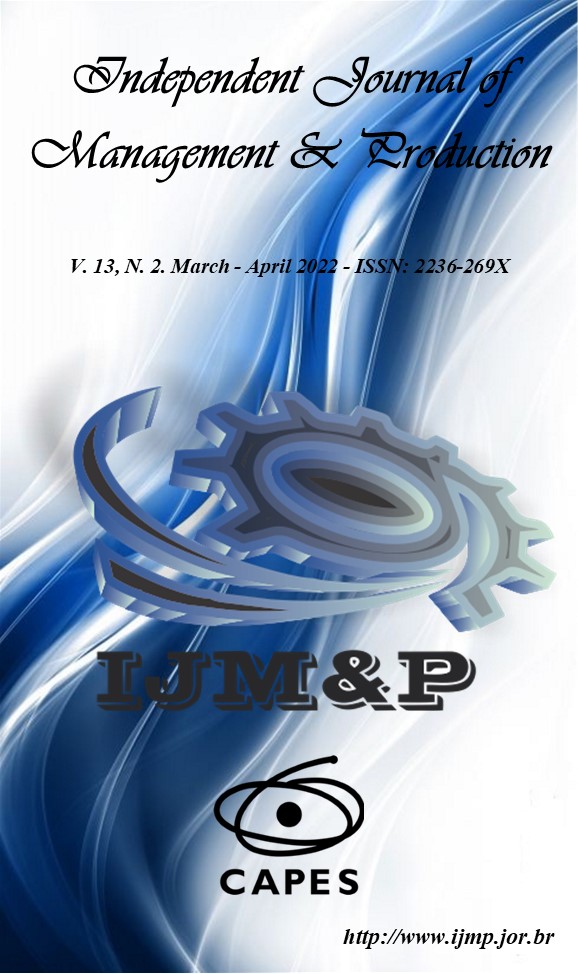Economic analysis of indicators of the competitiveness of Saudi date exports
Main Article Content
صندلی اداریAbstract
This study analysed the competitiveness indicators of Saudi exports of dates using econometric analysis and competitiveness indicators. The Republic of Yemen was found to rank first in importing Saudi dates, followed by the United Arab Emirates, then by Turkey, Kuwait, Jordan, Somalia, Lebanon and Qatar. A clear discrepancy existed in the average export prices of Saudi dates between the various importing countries, where the average export price ranged between a minimum of $559.9/tonne; Syria had an upper limit of $4,368.2/tonne for South Africa. The Kingdom of Saudi Arabia enjoyed a competitive advantage in exporting dates to South Africa, followed by the Emirates, Pakistan, Jordan, Djibouti, Turkey and Syria. The geographical concentration coefficient for each of the quantity and value of Saudi exports of dates was approximately 0.40 and 0.37 for each during 1990–2018. A 10% change in the competitiveness of Saudi dates, expressed in the rate of the actual performance of the foreign date trade, led to a change in the same direction of the quantity of Saudi exports of dates by 3.8%. The study recommends increasing the competitiveness of dates in international markets and preserving markets where in the Kingdom enjoys a competitive capacity for its agricultural exports.
Downloads
Article Details

This work is licensed under a Creative Commons Attribution-NonCommercial-ShareAlike 4.0 International License.
1. Proposal of Policy for Free Access Periodics
Authors whom publish in this magazine should agree to the following terms:
a. Authors should keep the copyrights and grant to the magazine the right of the first publication, with the work simultaneously permitted under the Creative Commons Attribution-NonCommercial-ShareAlike 4.0 that allows the sharing of the work with recognition of the authorship of the work and initial publication in this magazine.
b. Authors should have authorization for assuming additional contracts separately, for non-exclusive distribution of the version of the work published in this magazine (e.g.: to publish in an institutional repository or as book chapter), with recognition of authorship and initial publication in this magazine.
c. Authors should have permission and should be stimulated to publish and to distribute its work online (e.g.: in institutional repositories or its personal page) to any point before or during the publishing process, since this can generate productive alterations, as well as increasing the impact and the citation of the published work (See The Effect of Free Access).
Proposal of Policy for Periodic that offer Postponed Free Access
Authors whom publish in this magazine should agree to the following terms:
a. Authors should keep the copyrights and grant to the magazine the right of the first publication, with the work simultaneously permitted under the Creative Commons Attribution-NonCommercial-ShareAlike 4.0 [SPECIFY TIME HERE] after the publication, allowing the sharing of the work with recognition of the authorship of the work and initial publication in this magazine.
b. Authors should have authorization for assuming additional contracts separately, for non-exclusive distribution of the version of the work published in this magazine (e.g.: to publish in institutional repository or as book chapter), with recognition of authorship and initial publication in this magazine.
c. Authors should have permission and should be stimulated to publish and to distribute its work online (e.g.: in institutional repositories or its personal page) to any point before or during the publishing process, since this can generate productive alterations, as well as increasing the impact and the citation of the published work (See The Effect of Free Access).
d. They allow some kind of open dissemination. Authors can disseminate their articles in open access, but with specific conditions imposed by the editor that are related to:
Version of the article that can be deposited in the repository:
Pre-print: before being reviewed by pairs.
Post-print: once reviewed by pairs, which can be:
The version of the author that has been accepted for publication.
The editor's version, that is, the article published in the magazine.
At which point the article can be made accessible in an open manner: before it is published in the magazine, immediately afterwards or if a period of seizure is required, which can range from six months to several years.
Where to leave open: on the author's personal web page, only departmental websites, the repository of the institution, the file of the research funding agency, among others.
References
Bediwi, I. M. A. (2012). Some indicators of comparative and competitive advantages of Egyptian exports of green beans. The Egyptian Journal of Agricultural Economics. 22(1), 191–206.
Buckley, P. J., Pass, C. L., & Prescott, K. (1988). Measures of international competitiveness: a critical survey. Journal of marketing management, 4(2), 175-200.
Ghanem, A. M. K. (1998). Economic stability and the desired level for the production and export of the most important medicinal and aromatic plants. The Sixth Conference of Agricultural Economists, The Egyptian Association for Agricultural Economics, 137–182.
Kirchgässner, G., Wolters, J., & Hassler, U. (2012). Introduction to modern time series analysis. Springer Science & Business Media.
Lall, S. (2001). Competitiveness indices and developing countries: an economic evaluation of the global competitiveness report. World development, 29(9), 1501-1525.
Ministry of Environment, Water and Agriculture. The annual agricultural statistical book, miscellaneous issues, 1990–2019, Kingdom of Saudi Arabia.
Oral, M., & Chabchoub, H. (1997). An estimation model for replicating the rankings of the world competitiveness report. International Journal of Forecasting, 13(4), 527-537.
Porter, M. E. (1990). The competitive advantage of nations. Competitive Intelligence Review, 1(1), 14-14.
World Food and Agriculture Organisation database for the period 1990–2018.





